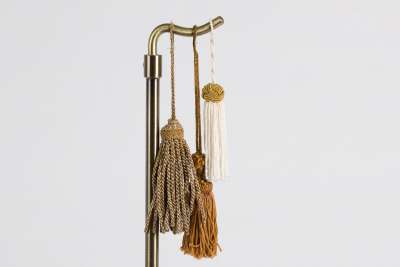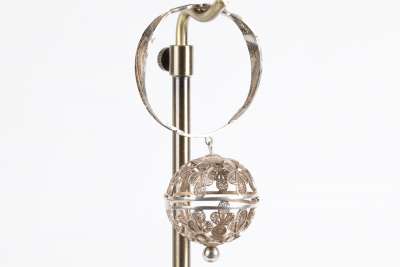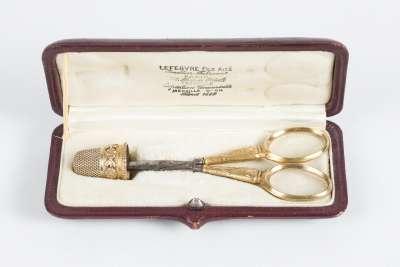A regency penwork sewing pannier in the chinoiserie style. The sloping sides of the pannier are decorated with figures, horse, elephant and camel within flowering leaf borders. The pin hinged lid is decorated with oriental figures in a garden within a conforming border. The front is fitted with a compartmentalised draw below a swing handle. The drawer contains 3 bone reels and silks. Circa: 1811 to 1820 Origin: United Kingdom
Condition: Good with wear consistent with age and use.
Dimensions: Weight 315 gms, Length 17cm, Height 20.5cm with the handle up, Width 13cm

















